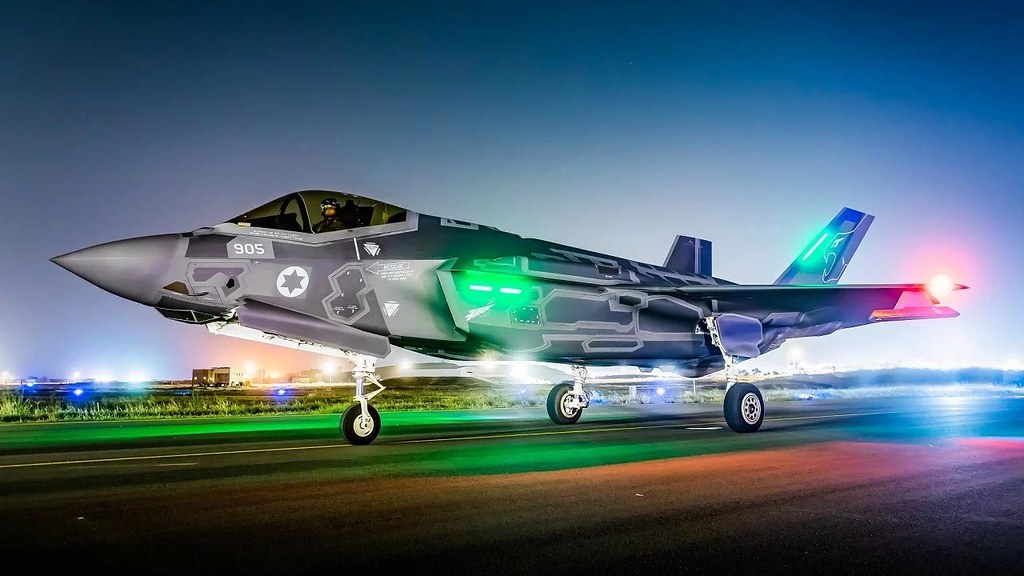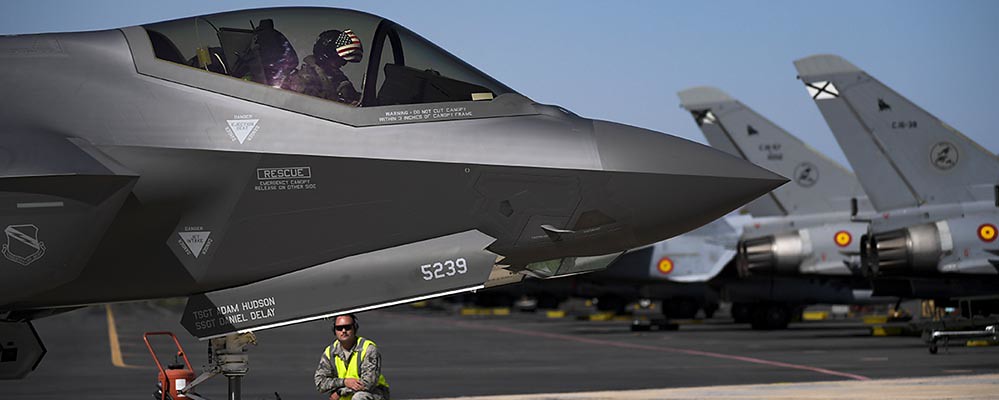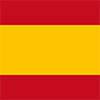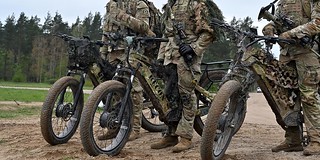What will happen to the red and yellow roundels if Spain decides to buy the F-35?
Unlike other allied countries, Spain still has not taken the step of deciding to acquire the F-35 Lightning II fifth-generation fighter.
Although the Spanish Air Force may consider other options, such as continuing to buy Eurofighter Typhoon fighters until the arrival of the future FCAS (this seems most likely), for the Spanish Navy there is currently no other alternative on the market to replace their Harrier II. There is a curious detail about these planes that many will have already observed, and that is that all the F-35s (except those used as aggressors by the USAF) carry the same color scheme grey.

This paint has a reason for being that goes beyond its visual appearance: it is a paint with special properties that absorb radar signals and reduce the aircraft's infrared signature, in order to reinforce its properties. stealth characteristics, that is, in order to make it more invisible to radar and weapons that use infrared sensors (that is, that are guided by heat). A unique feature of the F-35 is that almost all fighters of this type carry low-visibility national emblems. You can see it in this video posted this week on USA Military Channel:
The use of low visibility roundels is more than just a visual measure on the F-35. Everything indicates that these types of emblems are used to also reduce the radar signature, and it is possible that the paint used to apply them also has special properties, although I have hardly found any information about it.

The question is: what would happen to the traditional rojigualda roundels if Spain decides to buy the F-35? Let's remember that Spain has one of the oldest military roundels: its origin dates back to the Spanish War of Independence (1808-1814), becoming official in 1871 in the Spanish Armed Forces. Its first use in military aviation was made in 1913. The fact is that, unlike other nations, until now the Spanish Armed Forces have never used low-visibility roundels. At most, in some cases, such as the SH-60 Seahwak helicopters of the Spanish Navy, very small reddish-yellow roundels have been painted, almost imperceptible from a certain distance.

The reason why Spain does not have low visibility roundels is because their design shares the same shape with the roundels of other countries, such as France, Belgium, Italy and Romania. The only peculiarity of the Spanish roundel is that the central circle is smaller than in the insignia of other countries (although in some aircraft, for example the already retired SH-3 Sea King of the Navy, that circle was larger). Thus, a low-visibility version of the Spanish roundel could cause confusion, although Spanish military aircraft (with the exception of those used by the Navy) are also distinguished by the Cross de Saint Andrew that they carry on their tail.

It must be said that technology has made these badges less useful than before. Today, the identification of combat aircraft is carried out mainly by IFF systems, which automatically tell a plane if the aircraft it is detecting on its radar is friendly or enemy. For the rest, the use of the radio serves to help in this identification. However, national insignia continue to be of great importance, as they provide valuable information in those interception missions that require visual confirmation.

However, it should be noted that while low-visibility badging appears to be the norm on the F-35, there are exceptions as well. The United States Marine Corps, for example, has planes that, despite bearing their national insignia in a low-visibility version, bear other markings in bright colors, as we can see in the following photo. This may indicate that low visibility badges are important but not required.

There is another notable exception, which is F-35As purchased by Denmark, who have their national roundels and the Dannebrog (Denmark's flag) in red and white. After all, it is the oldest flag in Europe and the second oldest flag in the world, and as in the case of Spain, the Danes do not want to do without the beautiful colors of their national ensign .

---
Foto principal: U.S. Navy. Un F-35A de la 388ª Ala de Caza de la Fuerza Aérea de Estados Unidos en la Base Aérea de Los Llanos, en Albacere (España) para participar en el Tactical Leadership Programme (TLP). Al fondo vemos cazas Eurofighter Typhoon del Ala 11 del Ejército del Aire de España.
|
Don't miss the news and content that interest you. Receive the free daily newsletter in your email: |
- Most read
- The Spanish Army parades in Rēzekne on the anniversary of Latvia's independence
- The firearms used by the Pontifical Swiss Guard, the smallest army in the world
- Ye Olde Pub: The American B-17 bomber saved by a German Bf-109 fighter pilot
- The anonymous Czech prisoner who saved an American B-17 bomber in World War II
- Sierra Army Depot, a huge United States base with hundreds of Abrams tanks stored
- Eurofighter vs F-35: the opinions of professional pilots on these advanced fighters
- The military salute: origin, types & curiosities

 ES
ES







Opina sobre esta entrada: